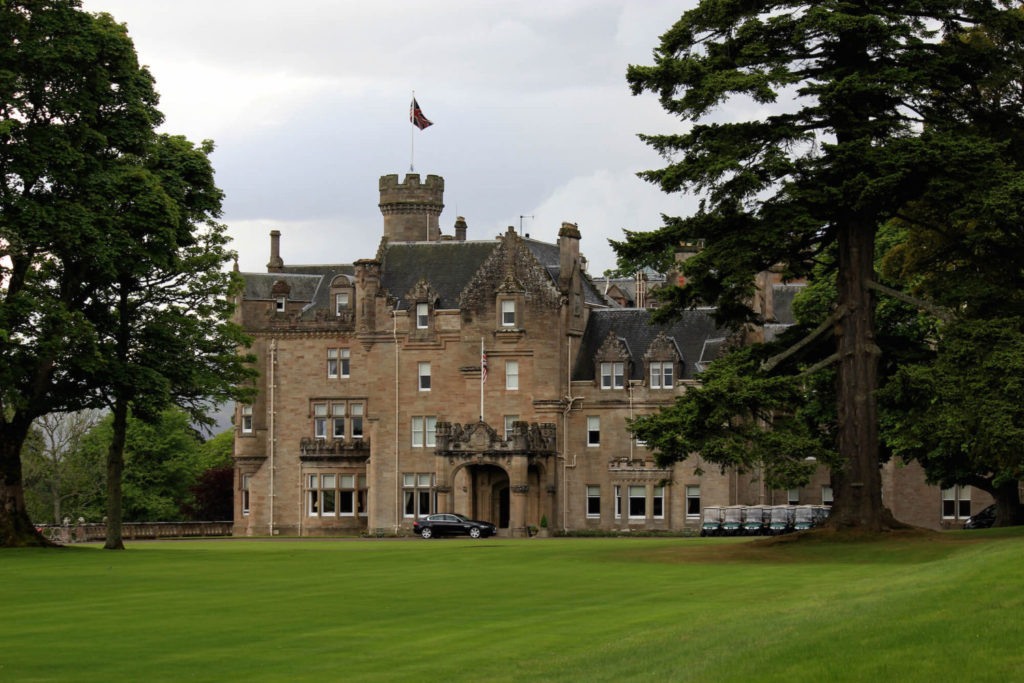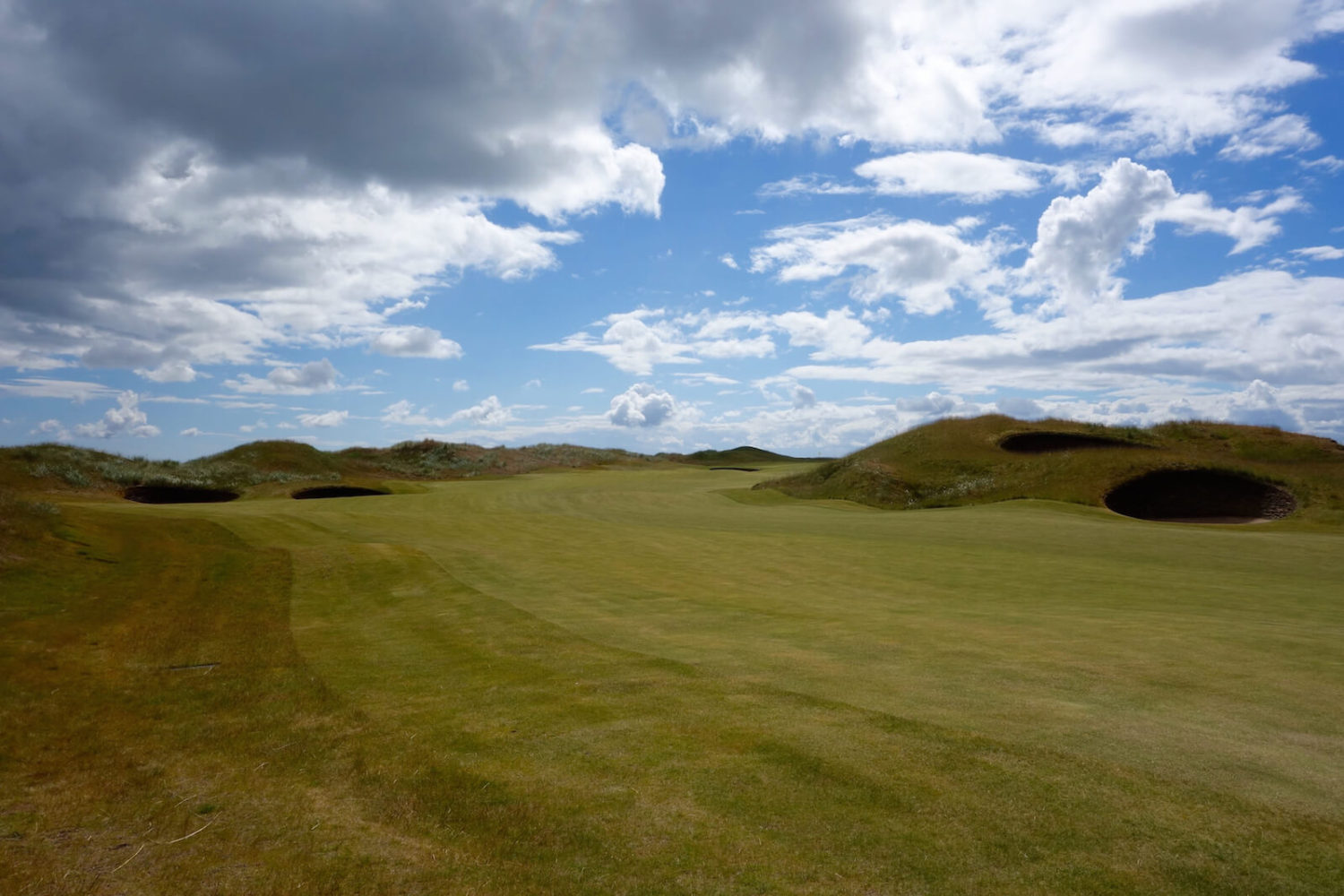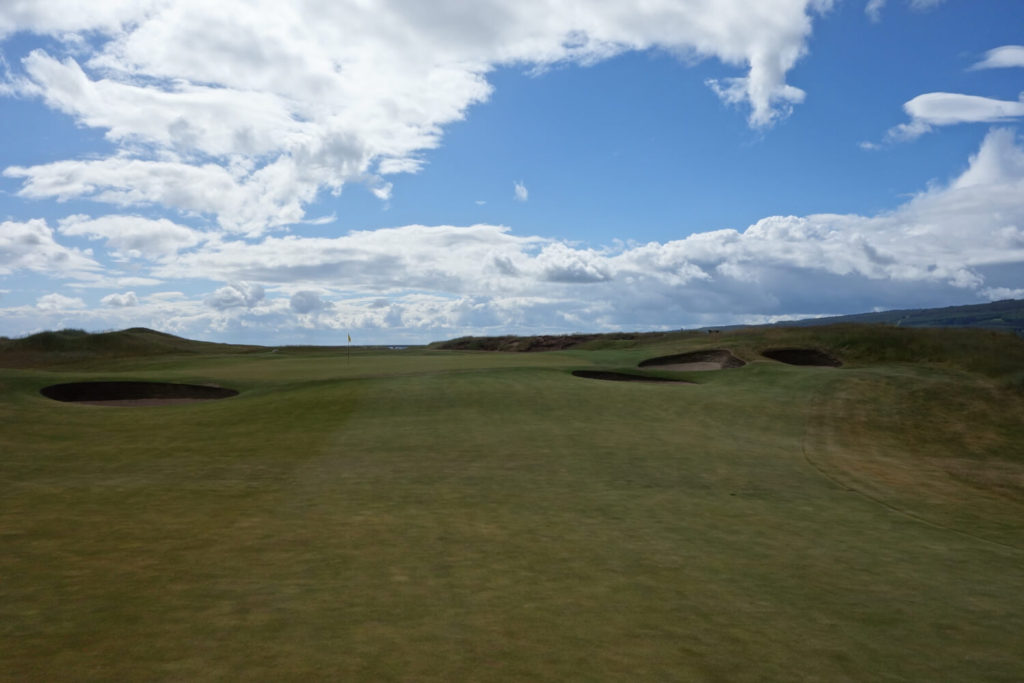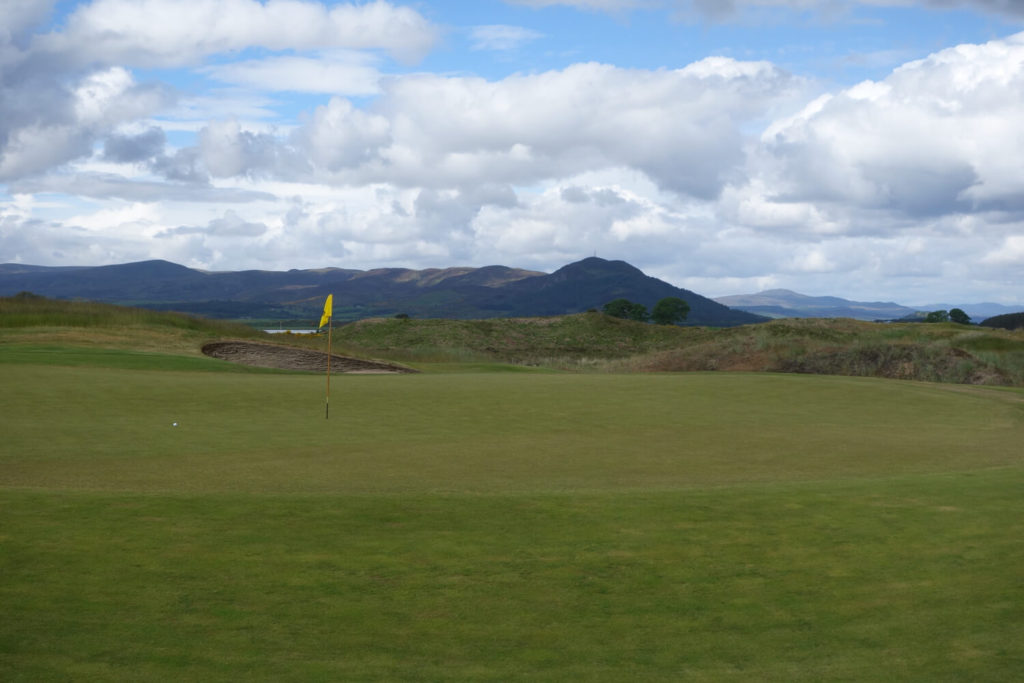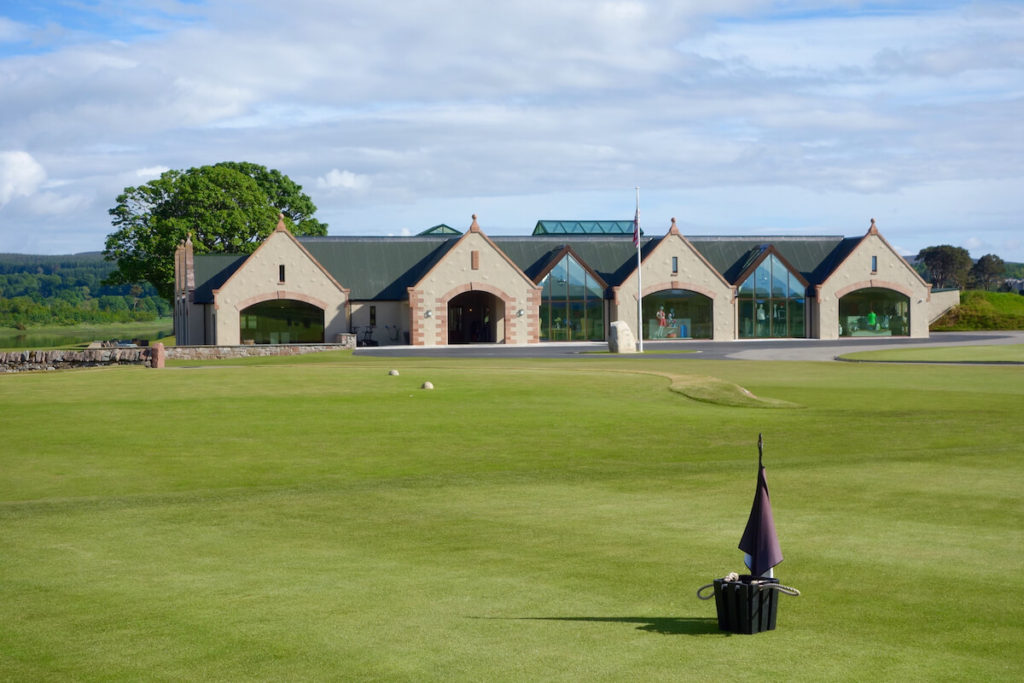When I recently visited Skibo Castle and the Carnegie Club, the main purpose of the weekend was to see the recently renovated Carnegie Links. The course had long been on my Scottish to-visit list, but it was always a tough trip to make because of the club’s location and exclusivity. In the end, the round happened years after moving back to the states from St Anrews.
Frankly, I’m glad that I played the Carnegie Links when I did. As you’ll read below, over the past 10 years the course has undergone steady renovation work that has elevated it from an interesting course to one that stands with the best modern links in Scotland. Combine the renovation results with the club’s policy to allow limited visitor play and the Carnegie Links is suddenly a serious course to consider for any Highlands itinerary.
This review only covers the golf course at Skibo and doesn’t go into the experience of staying in the castle and experiencing the rest of the club. I’ve written a separate review on Skibo Castle itself, and I highly recommend reading it – Skibo is one of the most special places I’ve ever stayed.
The Carnegie Links—a Donald Steel design—was opened in 1991, but golf on the Skibo Estate dates back to the early 1900s when Andrew Carnegie built a nine-hole course on the property. The course fell into disuse and was eventually abandoned, but I’m told it sat on the same piece of land as the current course.
My post about the experience at Skibo goes into the history of the estate, but it’s interesting to note that golf was always important to Andrew Carnegie. It was so important that he donated a large silver shield to nearby Royal Dornoch as a trophy for an amateur event on the course. They’ve played for that shield ever since and this year marks the 104th playing of The Carnegie Shield.
Among other things, Carnegie was also a member of The Saint Andrews Golf Club in New York, which was one of the five founding clubs of the United States Golf Association. Golf was clearly important to him and considering that the Carnegie Club at Skibo Castle tries to honor his memory, it’s crucial that golf is a major part of the estate.
Prior to the renovation, the Carnegie Links was an interesting and strategic design, but it was never considered one of Scotland’s great modern courses due to a lack of views, and a string of flat and unmemorable holes in the middle of the round. The best parts of the land for golf also happened to be sensitive environmental areas and could therefore not be touched.
Tom Mackenzie, a course architect and native of nearby Dornoch, was brought in in 2007 to conduct a course renovation to address the design’s shortcomings and make some major changes. Fittingly, Mackenzie worked with Donald Steel on the original design, so knew the environmental challenges that had to be avoided. The renovation work that started over a decade ago has continued nearly every year since with ongoing changes carried out by Mackenzie, Skibo’s owner, and Carnegie Links Director of Golf David Thomson.
The team has removed large swaths of gorse to open the views and increase playability. Among other things they also reshaped greens, moved the 12th hole, built a new par 3 13th, lengthened the 14th to create a par 5, reshaped slopes, added bunkers, and changed the routing to move the flatter parts of the course to earlier in the round. Many of those changes hadn’t been possible when the course was built due to environmental constraints, but Scottish Natural Heritage revisited the site and approved the changes. If you’re interested in a deeper look at the course renovation, I suggest you read this article from Golf Club Atlas that includes great quotes from Tom Mackenzie on the work and also some “before and after” images.
The course is laid out over three distinct regions. One area borders a loch and tidal marsh, another sits beside the Dornoch Firth, and there’s a third area in between. In hindsight the three land types are distinct, but while on the course the routing flows really well and it doesn’t feel disjointed.
Hole #1 – 398 yards – The opener is relatively flat and straightforward, but subtle movement in the green shrugs off errant approaches.
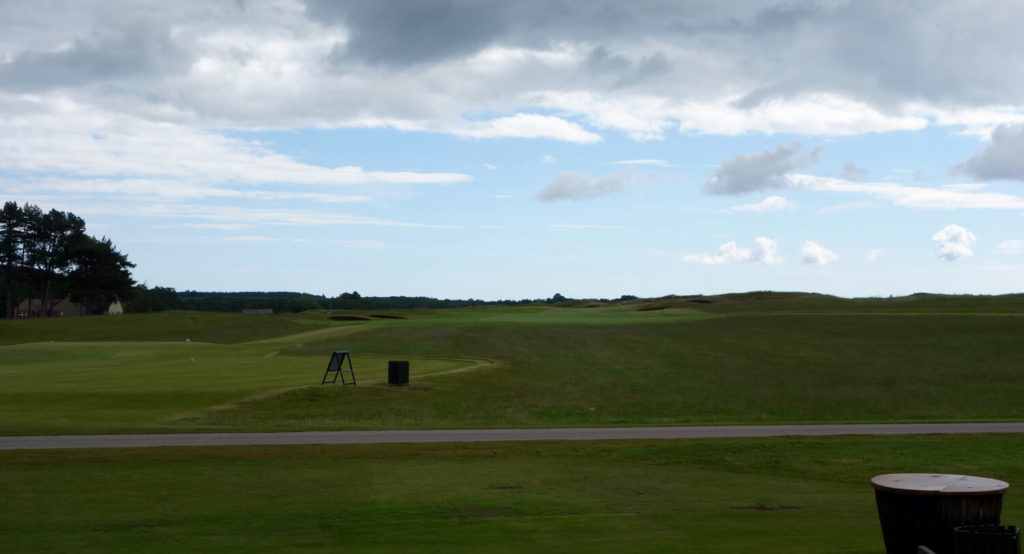

Hole #2 – 367 yards – This dogleg right is one of the really interesting strategic holes on the front nine. The fairway has two bunkers on the far side of the corner and three on the inside. The longer and further left the drive the better the angle into the green, but, that brings the two pot bunkers into play. If you play short and left of all the bunkers it’s an uphill blind shot into the green.
Hole #3 – 484 yards – A dune obscures the right side of this fairway from the tee and makes the hole appear much narrower than it is. Long players can go for this par 5 in two, but the green is well-guarded with three bunkers.

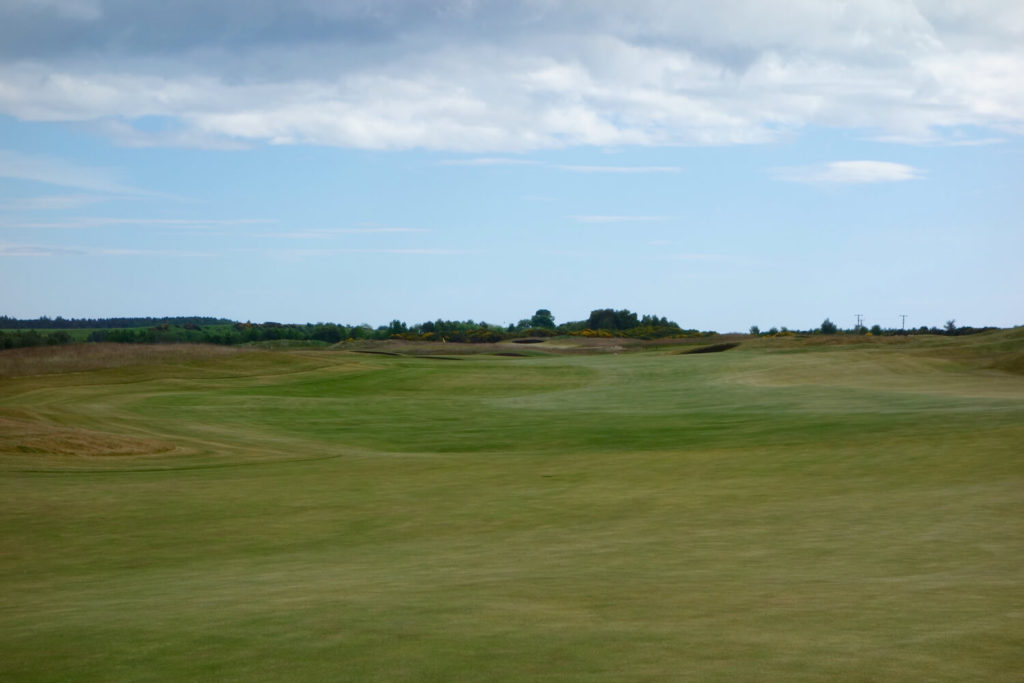
Hole #4 – 147 yards – This downhill par 3 can be really tricky depending on the wind. The green slopes off on both sides into two bunkers on both sides of the green. It would be a tough green to hold downwind!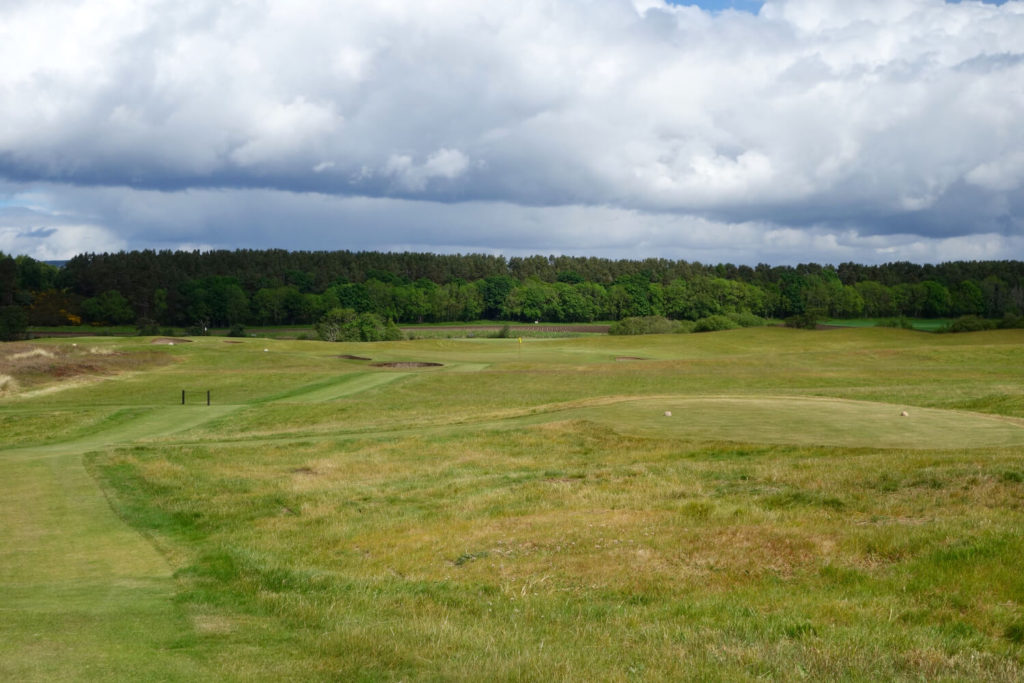
Hole #5 – 537 yards – This dogleg right par 5 has a group of bunkers 250 yards from the tee and another 40 yards out in the layup zone. The key is to lay back and have a full wedge into the green.
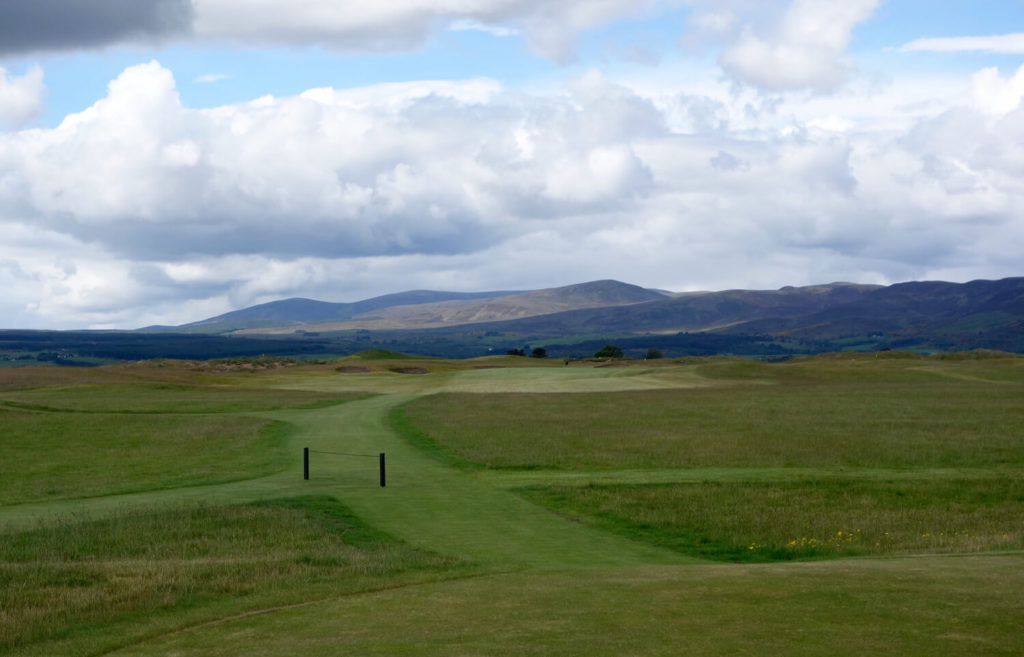
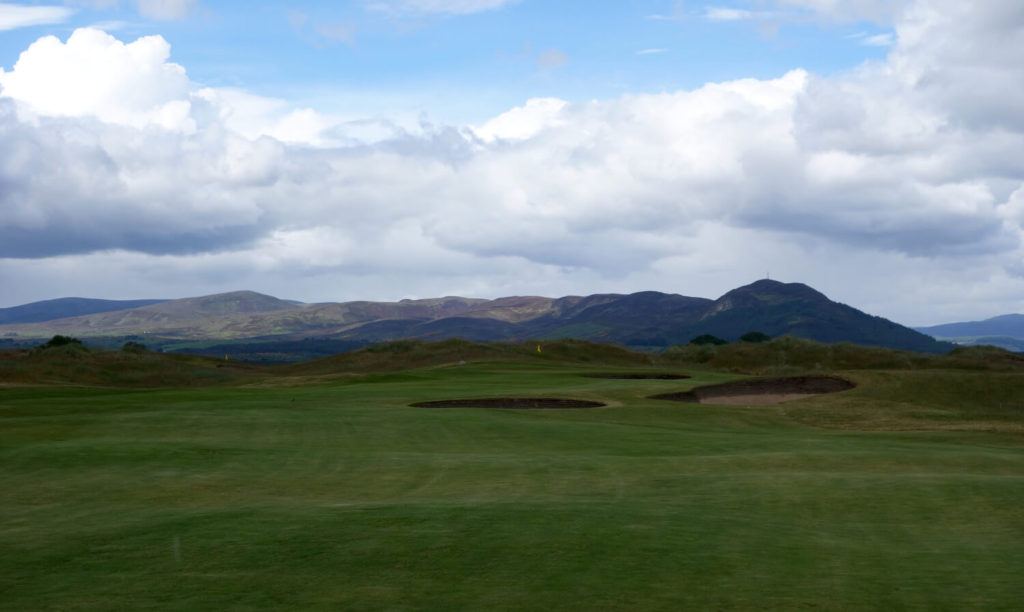
Hole #6 – 142 yards – Gorse once completely surrounded this green blocking out the amazing 360-degree view. The gorse also swallowed any shot that barely missed the green. Fortunately they removed the gorse during the renovation. Donald Steel said this hole immediately appeared to him when visiting the site. He just reshaped and flattened areas on two adjacent dunes for the tee and green.
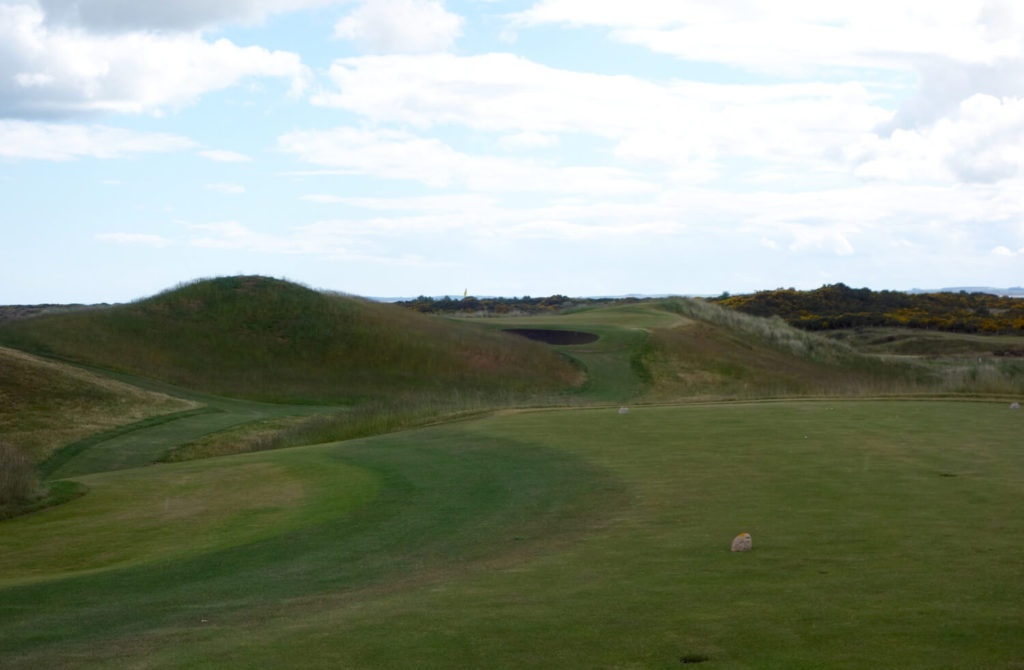
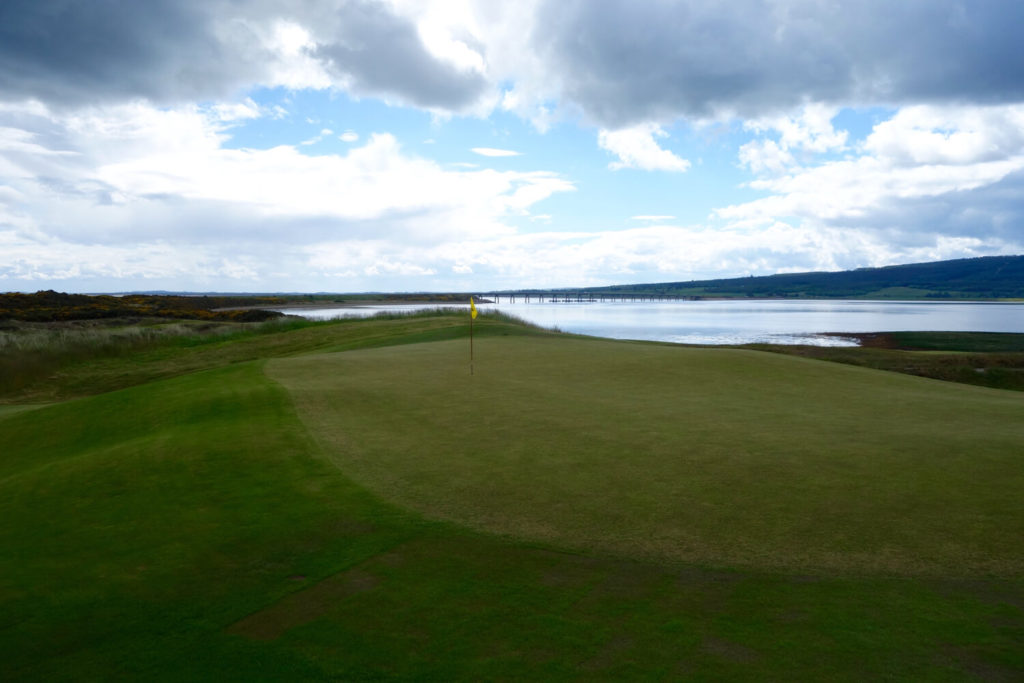
Hole #7 – 311 yards – This is the hole I want to play again most. It’s a new hole built in 2008 and the fairway separates into two levels around 215 yards from the tee. The angle into the green is best from the top side but, of course, it’s a much harder tee shot to reach the top level. The view from the green is stunning.
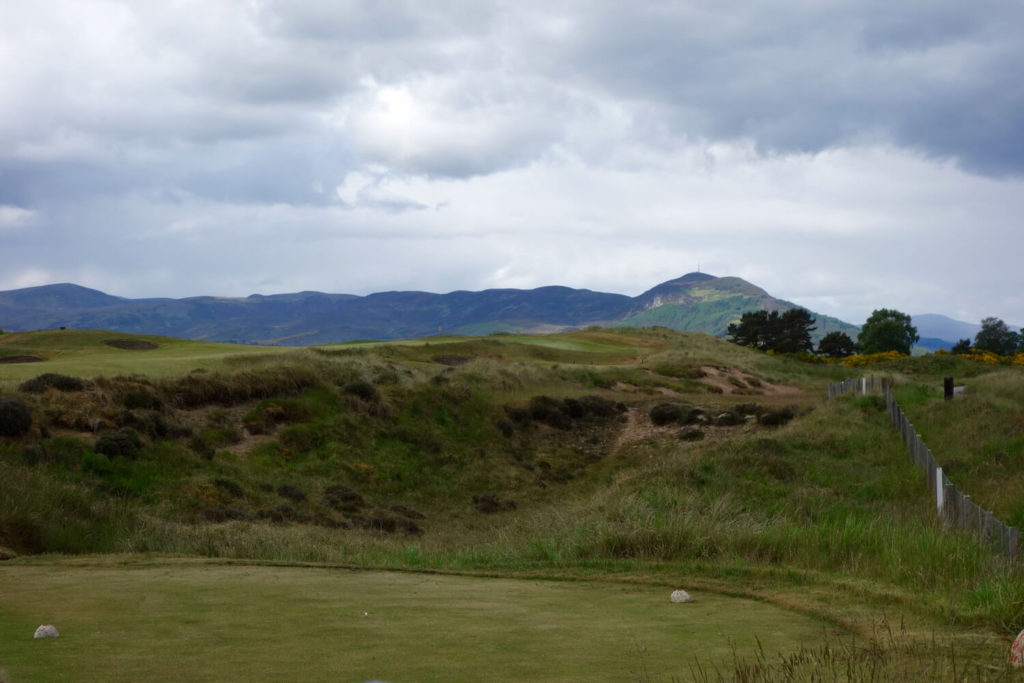

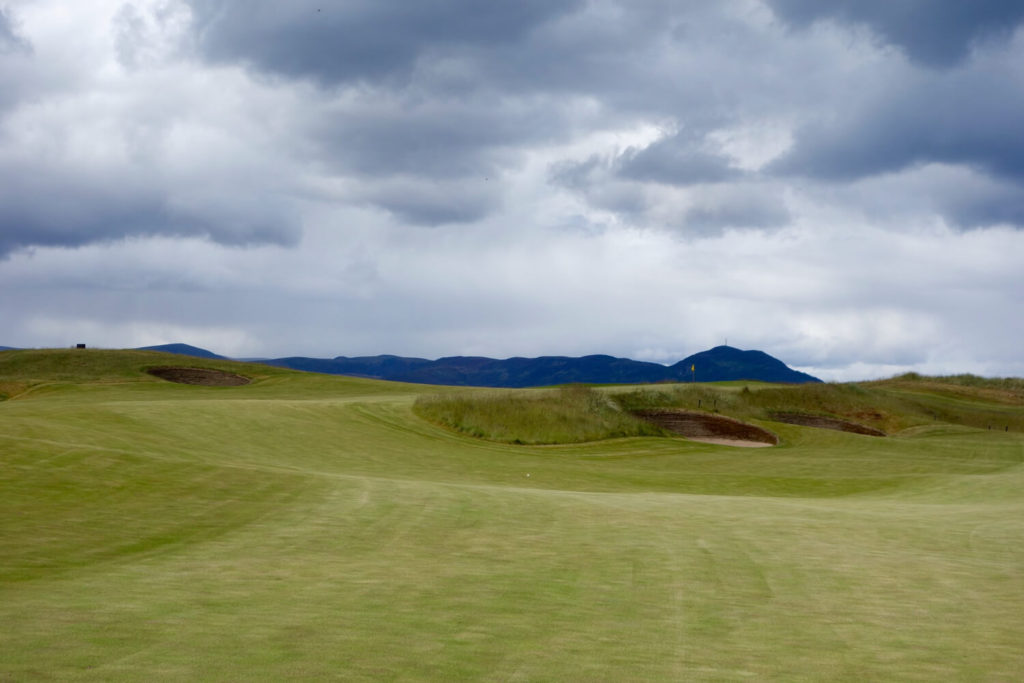
Hole #8 – 333 yards – This hole runs beside the Dornoch Firth and different tee boxes force different amounts of carry across the water. The view below looks straight down the fairway, but the championship tee is well right of where I was standing.
Hole #9 – 178 yards – This tricky par 3 feels narrow, but slopes near the green make the effective size of the putting surface larger. A single bunker guards the green and forces running shots to thread the needle between it and the right side of the green.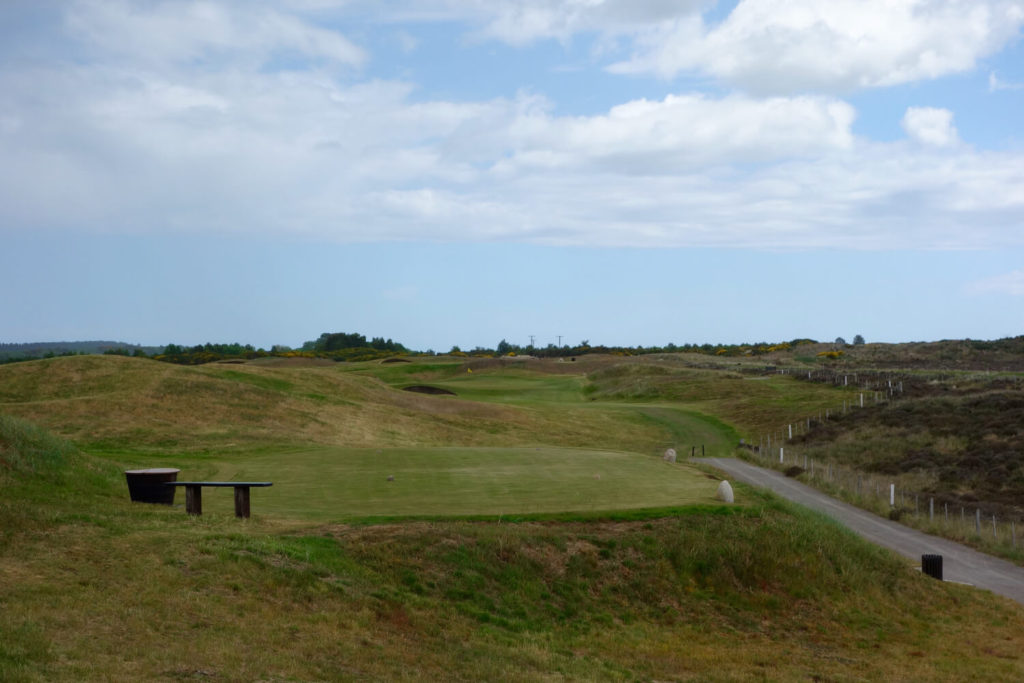
Hole #10 – 472 yards – Reminiscent of the Himalayas bunker at Royal St. George’s, a very deep fairway bunker helps frame this tee shot. Balls can easily clear the bunker and ridge on this long par 4 though, leaving a long shot into the green.
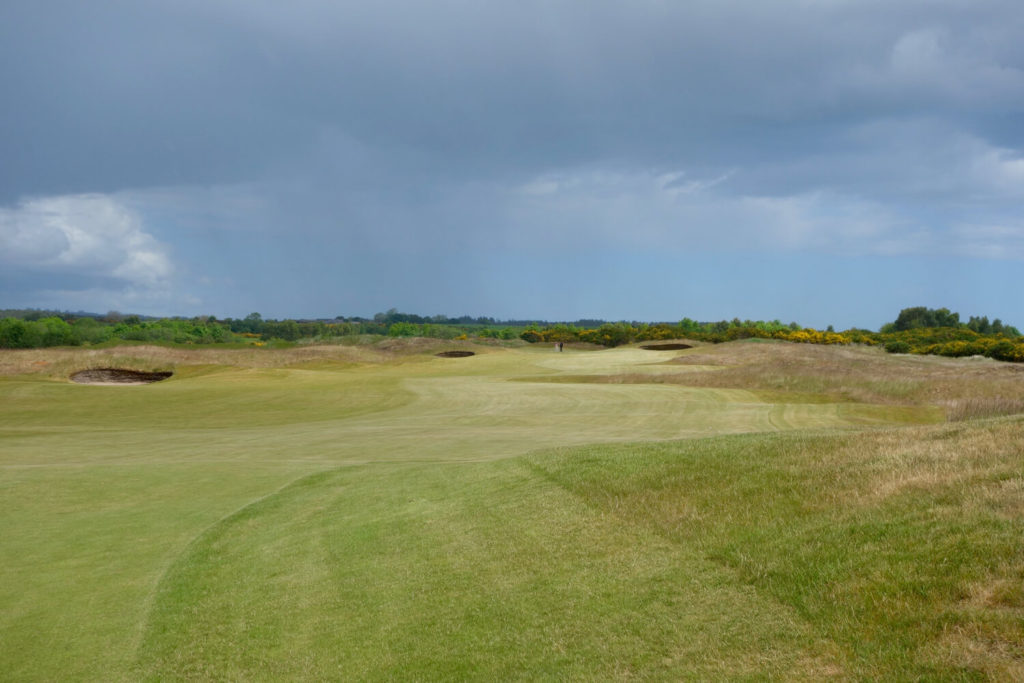
Hole #11 – 418 yards – I lost my photos of this hole, but it’s a dramatic dogleg right par 4 beside the loch. Two bunkers guard the green on the left and the loch plays in close on the right. Enjoy this short video of the 11th in lieu of my photos!
Hole #12 – 237 yards – The 12th swings back toward the clubhouse on the loch side of the property. This hole was moved further right to play alongside the loch—something that wasn’t possible due to environmental constraints when the course was originally built.
The tougher tee shot playing close to the water leaves the most desirable angle into the green.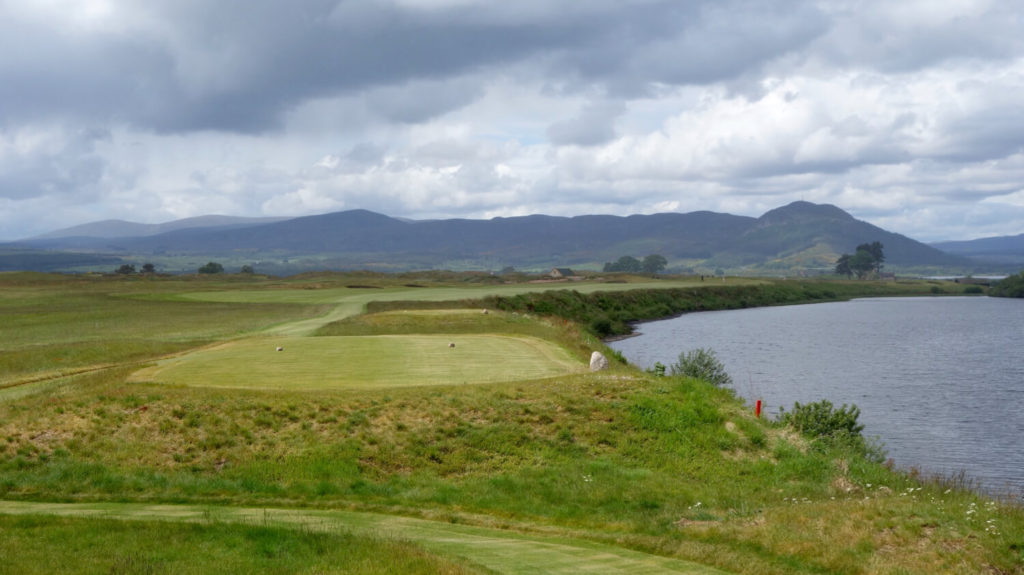

Hole #13 – 145 yards – Trees stood behind this green originally, completely obscuring the amazing view of the loch and hills beyond. The hole has three bunkers curving around the right side of this green and runoff areas on the left. It’s only 135 to reach the front edge, but accuracy is key (especially on a windy day).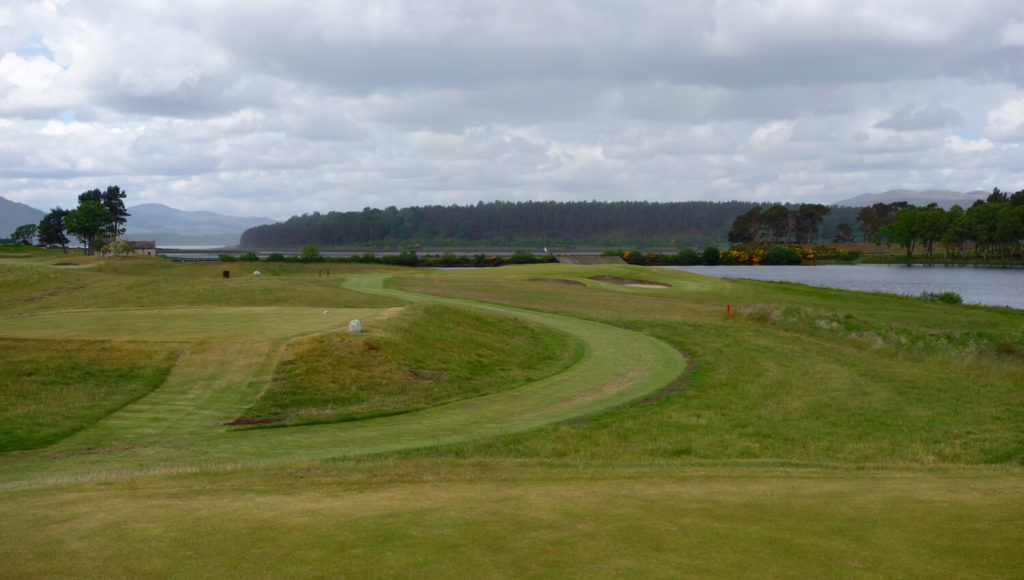
Hole #14 – 500 yards – This is one of the hardest drives on the course. Three bunkers guard the left (although two sit in the rough and really just frame the left side of the hole) and two on the right. The layup area is clear, but the green is crowned like you’d see at nearby Royal Dornoch.
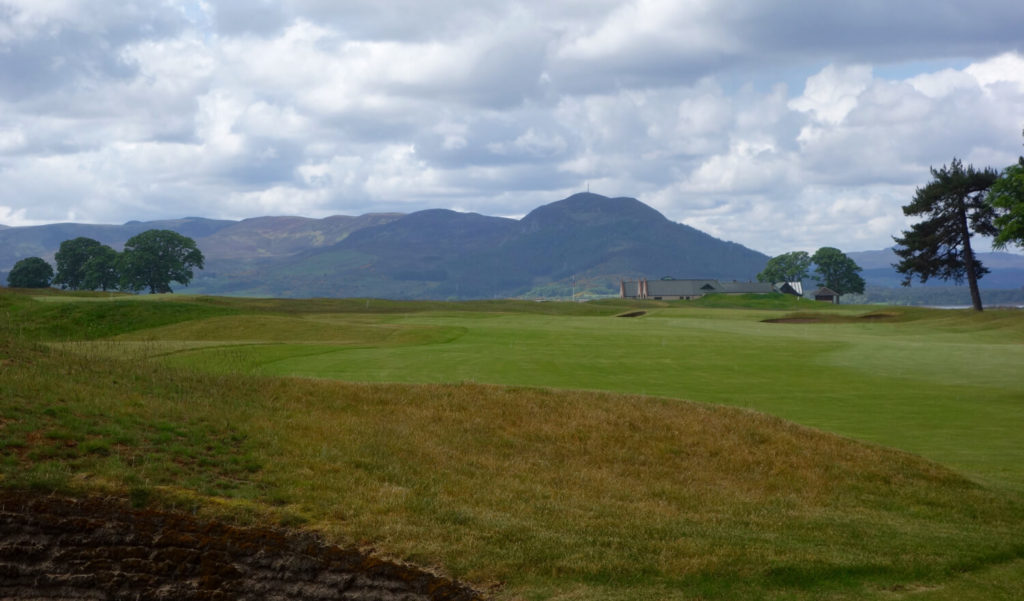
Hole #15 – 189 yards – This long bunker-less par 3 is a serious challenge from the member tees, let alone the tips (215 yards). The green is raised slightly to create a runoff area on the front and right sides. The pin is front left in the photo below, but back right forces the toughest shots.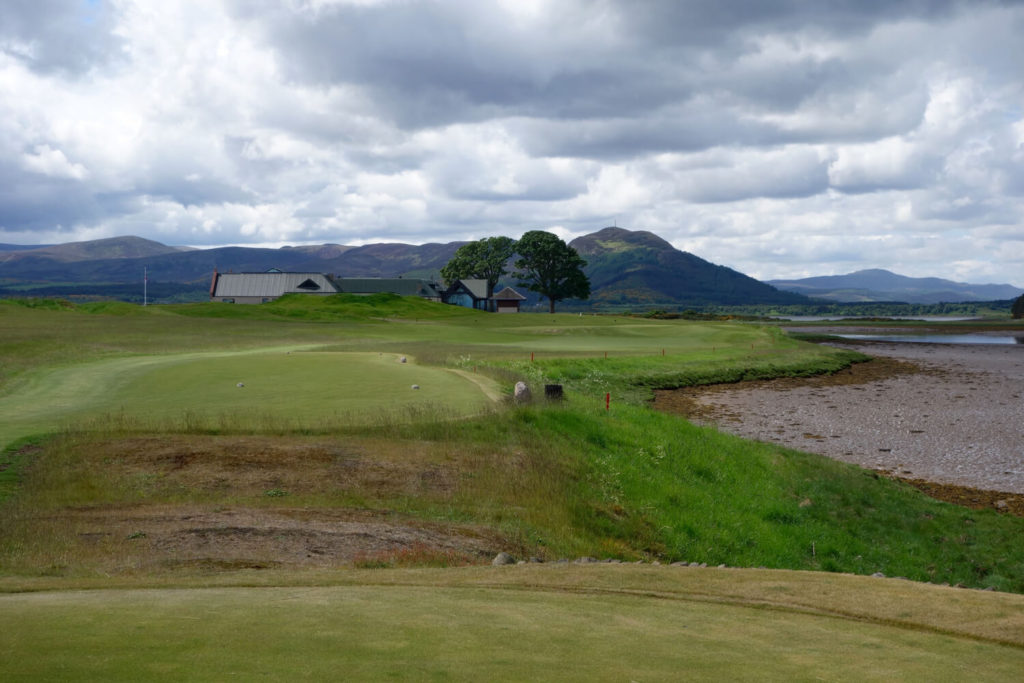
Hole #16 – 407 yards – The final three-hole loop starts here with a picturesque par 4 framed by dark Highlands hills. The green is raised with a large false front that repels any short approach shots. It’s also worth nothing the stone wall that separates the 16th hole from the range on the left. The wall was actually built during the renovation, and instead of much cheaper methods and styles, Skibo hired traditional stone masons to build the wall by hand.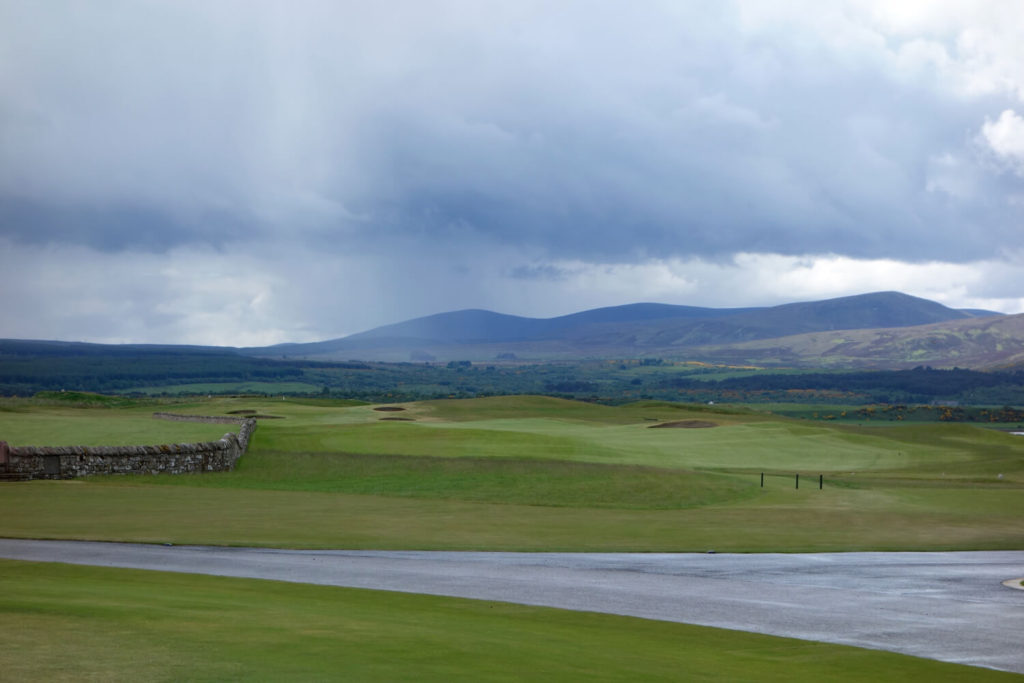
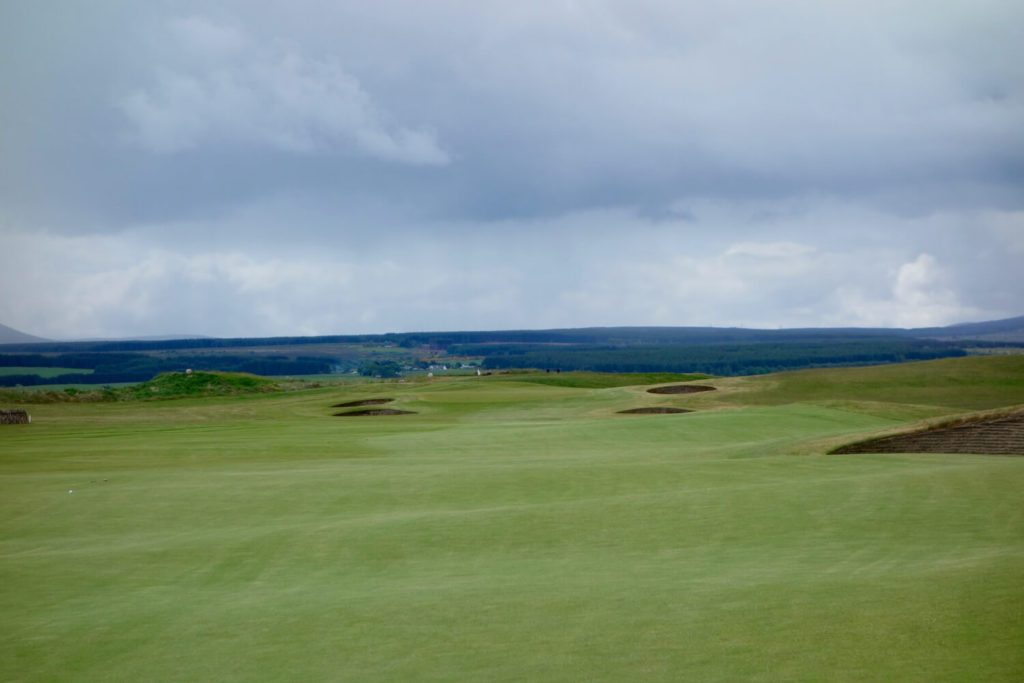
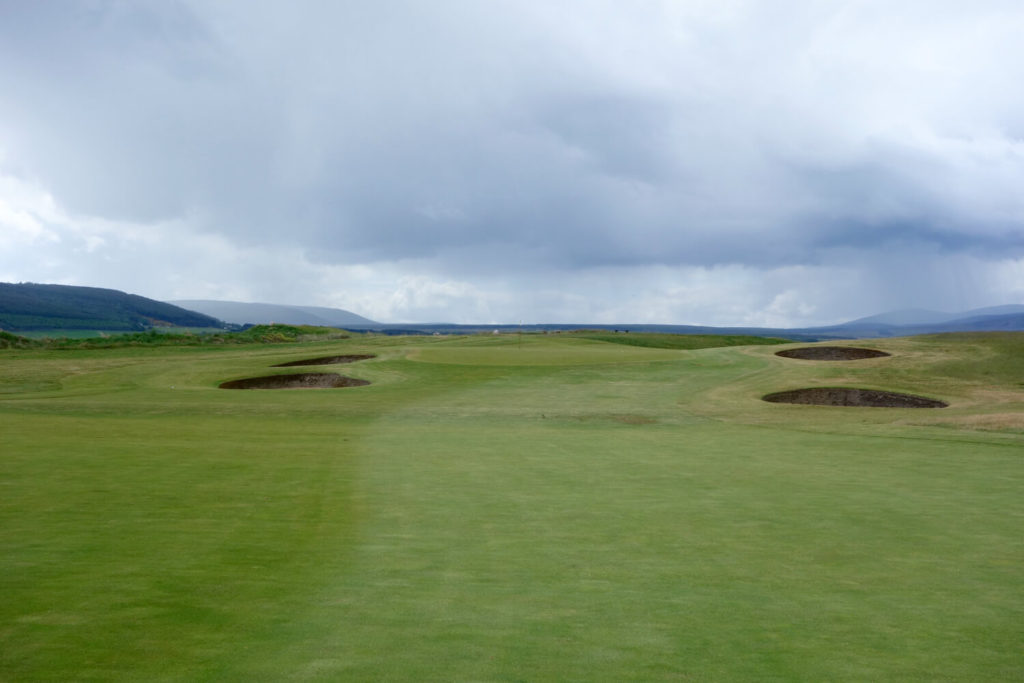
Hole #17 – 304 yards – This is be driveable for long hitters, but the fairway is peppered with bunkers that prevent shorter drives from running up to the green. It’s a great risk-reward birdie opportunity at a key point in the round.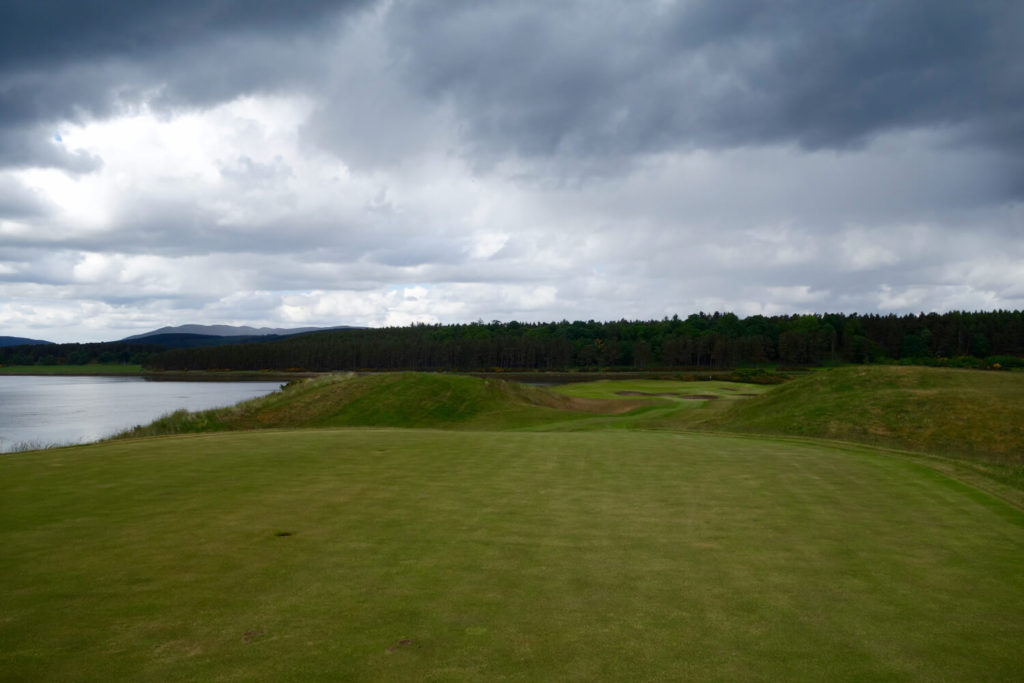
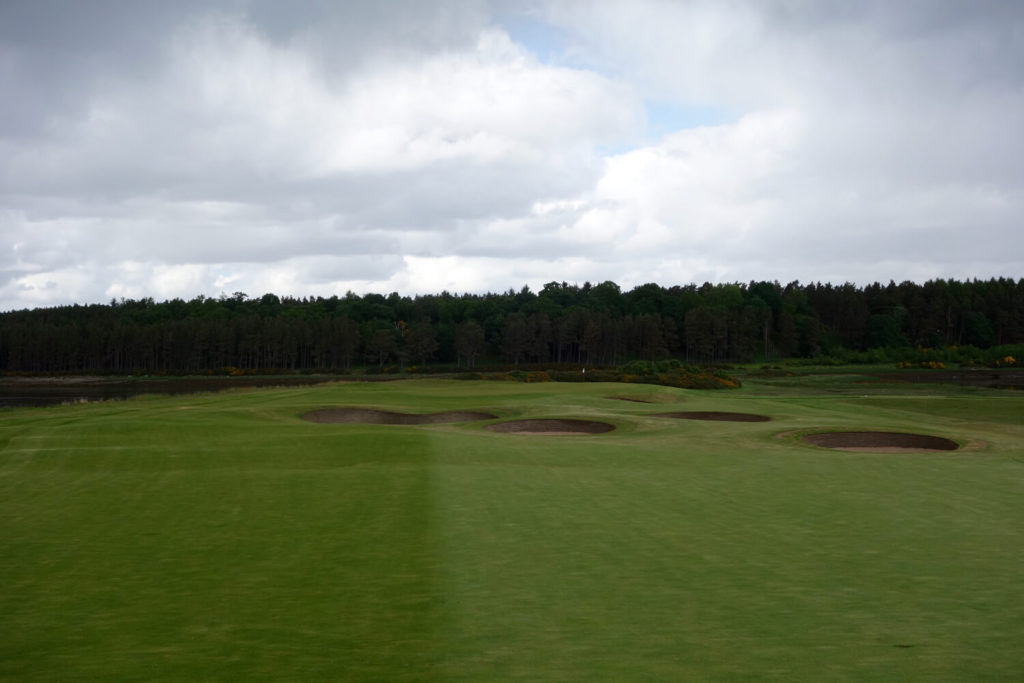
Hole #18 – 515 yards – The final hole is a sweeping dogleg left that plays around a tidal marsh. In the first photo below you can barely make out the green left of the clubhouse. The approach shot is intimidating with the loch behind the green, bunkers and slopes to the right, and the marsh to the left. It’s another final make-or-break moment that’s perfect for match play. The final three hole loop is the perfect bet-settler.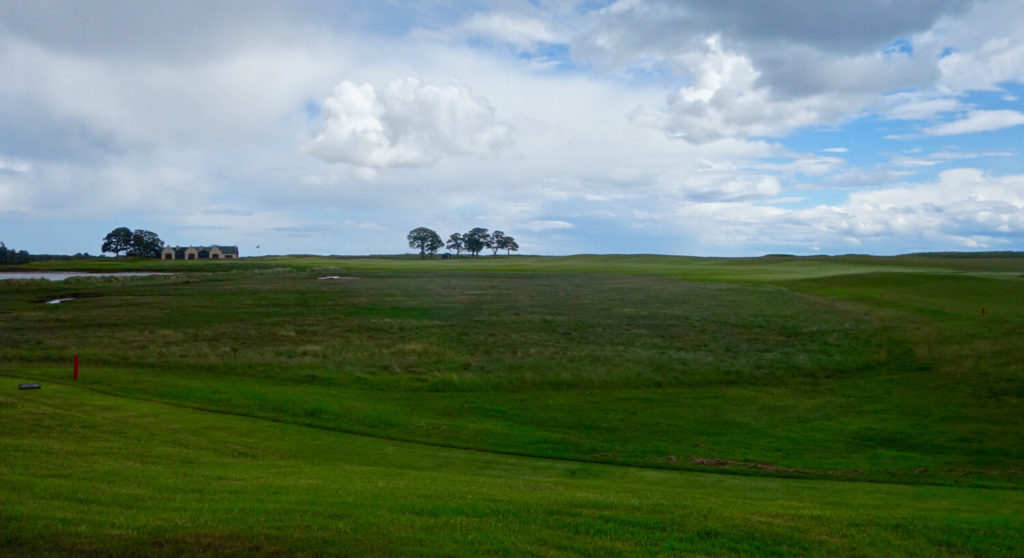
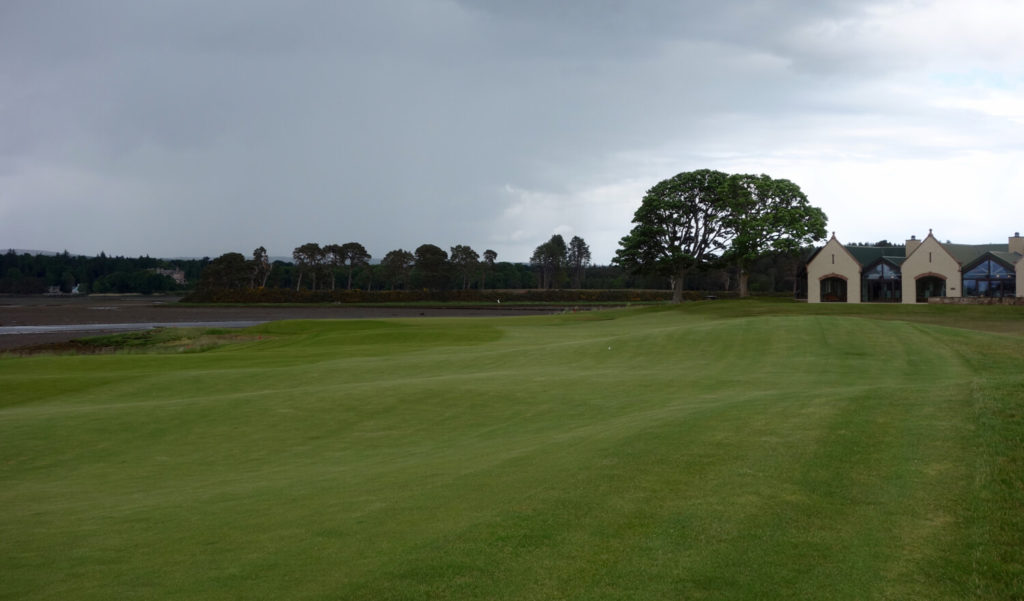
Fortunately for us non-members, The Carnegie Club offers a limited number of public tee times. Currently they allow two four-balls to play each day, Monday through Friday in the summer. The green fee is large (£300ish), but everything is included in the day – a meal, drinks, anything in the halfway house, bacon rolls, etc. Guests playing the course don’t get to visit the rest of the estate or the castle, though.
When I was staying at Skibo I saw a group of guests pull up to play the course on afternoon. One golfer frantically hopped out of the car and apologized to the starter for being late to arrive. The starter calmly said, “Don’t worry, sir! We don’t have tee times here at Skibo. Go inside, relax and get something to drink, and come back out when you guys are ready to play.”
The renovation work from Tom Mackenzie and the Skibo team has elevated the course to compete with the likes of Castle Stuart and Kingsbarns. The biggest challenge for the Carnegie Links is that most golfers visiting Scotland have never heard of the place… but that’s exactly how they like it.



